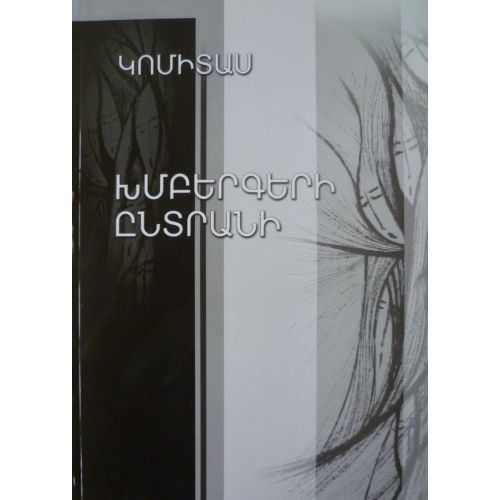Description
Komitas - Choirs Collection
Komitas - Choirs Collection
Soghomon Soghomonian, ordained and commonly known as Komitas, (26 September 1869 – 22 October 1935) was an Armenian priest, musicologist, composer, arranger, singer, and choirmaster, who is considered the founder of Armenian national school of music. He is recognized as one of the pioneers of ethnomusicology.
Orphaned at a young age, Komitas was taken to Etchmiadzin, Armenia's religious center, where he received education at the Gevorgian Seminary. Following his ordination as vardapet (celibate priest) in 1895, he studied music at the Frederick William University in Berlin. He thereafter "used his Western training to build a national tradition". He collected and transcribed over 3,000 pieces of Armenian folk music, more than half of which were subsequently lost and only around 1,200 are now extant. Besides Armenian folk songs, he also showed interested in other cultures and in 1904 published the first-ever collection of Kurdish folk songs. His choir presented Armenian music in many European cities, earning the praise of Claude Debussy, among others. Komitas settled in Constantinople in 1910 to escape mistreatment by ultra-conservative clergymen at Etchmiadzin and to introduce Armenian folk music to wider audiences. He was widely embraced by Armenian communities, while Arshag Chobanian called him the "savior of Armenian music".
During the Armenian Genocide—along with hundreds of other Armenian intellectuals—Komitas was arrested and deported to a prison camp in April 1915 by the Ottoman government. He was soon released under unclear circumstances and experienced a mental breakdown and developed a severe case of posttraumatic stress disorder (PTSD). The widespread hostile environment in Constantinople and reports of mass-scale Armenian death marches and massacres that reached him further worsened his fragile mental state. He was first placed in a Turkish military-operated hospital until 1919 and then transferred to psychiatric hospitals in Paris, where he spent the last years of his life in agony. Komitas is widely seen as a martyr of the genocide and has been depicted as one of the main symbols of the Armenian Genocide in art.
| Author(s) | Komitas |
| Language(s) | Armenian |
| Publisher(s) | Komitas |
| Year | 2009 |
| Pages | 80 |
| Binding | paperback |
| ISBN | 9789994185382 |

